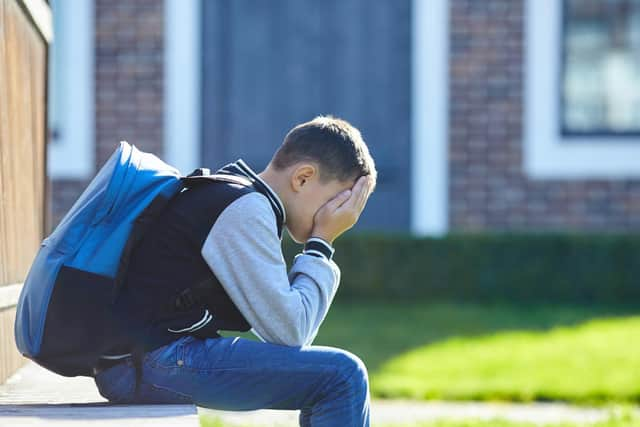Tens of thousands of children still living in child poverty in Milton Keynes, new data shows
and live on Freeview channel 276
Just under one in three children are living in poverty in Milton Keynes according to new findings.
Research carried out by Loughborough University for the End Child Poverty Coalition studied figures over five years.
Advertisement
Hide AdAdvertisement
Hide AdThe data analyses the differences between figures from 2014-15 to 2019-20. In Milton Keynes little has changed, 18,538 children are living in what is considered poverty now.


Findings from five years ago had the total at 17,877, a 661 child increase, but also a 0.5% decline in the percentage of children living in poverty.
Overall, 29.7% of children growing up in Milton Keynes are categorised as living in poverty in this report.
The Child Poverty Commission, previously labelled the child poverty numbers in Milton Keynes as 'shocking', in a report presented to the council.
Advertisement
Hide AdAdvertisement
Hide AdConcerningly, Milton Keynes' child poverty statistics is largely in line with the national picture. The latest data shows that 31% of children in Wales are in poverty, 30% in England and 24% in Scotland and Northern Ireland.
Stagnating incomes, high housing costs and cuts to the social security system have pushed many families to the brink. The rise in poverty comes despite most families working. The proportion of children living in poverty who are in working households has increased from 67% five years ago to 75% now.
In the North East, the child poverty rate has risen by over a third - from 26% to 37% - over five years, moving from just below the UK average to the second highest of any region, after London. A third of the overall increase happened in the latest year (2019/20) with many low-paid workers pushed below the poverty line by the freeze in their in-work benefits.
Sara Willcocks, head of external affairs at national poverty charity, Turn2us, said: “The impact of growing up in poverty is well documented; children in low income households have worse mental and physical health, they do less well in schools and have fewer opportunities in the future. This is why it is morally unacceptable for any child, let alone millions, to be allowed to grow up in financial hardship.
Advertisement
Hide AdAdvertisement
Hide Ad“Unfortunately, our children are now paying the debt for a decade of austerity, cuts and freezes. Wages have been allowed to remain low, rents have been free to rise and nothing has been done to tackle the soaring cost of living.
“If the government truly believes in compassion and justice, ministers must fully commit to solving it. We are urging the Prime Minister to listen to our recommendations and include them in a comprehensive strategy to end child poverty once and for all.”
End Child Poverty is calling for an urgent Government plan to end child poverty including:
-Create a credible plan to end child poverty
-Increase child benefits
-Maintain the £20 uplift to Universal Credit and extend to legacy benefits
Advertisement
Hide AdAdvertisement
Hide AdA Government spokesperson said: “Latest figures show that the number of children in absolute poverty has fallen by 300,000 since 2010. We are committed to supporting families most in need, spending billions more on welfare and planning a long-term route out of poverty by protecting jobs through furlough and helping people find new work through our Plan for Jobs. We also introduced our £269 million Covid Local Support Grant to help children and families stay warm and well-fed throughout the pandemic.”
This report looks at relative poverty figures that are after housing costs using a three-year average. This government believes absolute poverty is a better measure of living standards.
The absolute poverty line is fixed in real terms, so provides a better measure of how the incomes of the lowest earners compares with changes in the cost of living. Absolute poverty will only increase if low-income households are worse-off financially, whereas relative poverty can increase even if low-income households’ incomes are rising.
Between 09/10 and 19/20, absolute child poverty (after housing costs) fell in the UK from 28% (3.7 million) to 25% (3.5 million).
Advertisement
Hide AdAdvertisement
Hide AdAnna Feuchtwang, Chair of the End Child Poverty Coalition added: “The figures speak for themselves – the situation for children couldn’t be starker. We all want to live in a society where children are supported to be the best they can be, but the reality is very different for too many.
“The UK Government can be in no doubt about the challenge it faces if it is serious about ‘levelling up’ parts of the country hardest hit by poverty. After the year we’ve all had, they owe it to our children to come up with a plan to tackle child poverty that includes a boost to children’s benefits. And they need to scrap plans to cut Universal Credit given parents and children are having a tough enough time as it is.”
The full report ‘Local indicators of child poverty after housing costs, 2019/20’ as well as tables with Constituency and Local Authority data are available here.